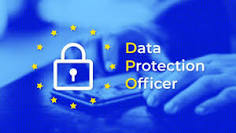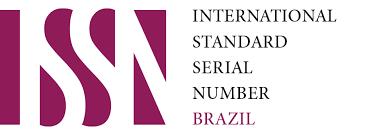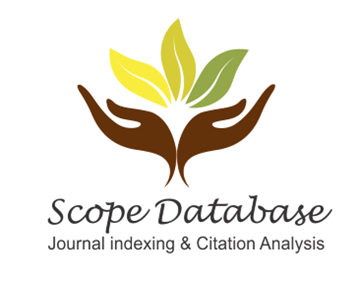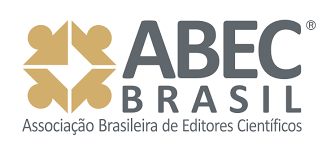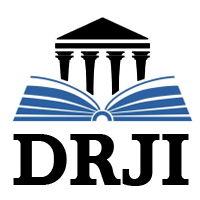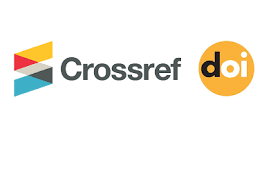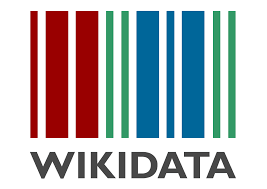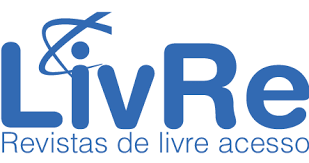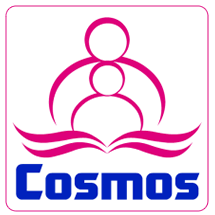EL USO DE VIDEOJUEGOS 2D PARA NIÑOS CON TDAH Y LA MEJORA DE LA COMPETENCIA INTERCULTURAL DE LOS PROFESORES
DOI:
https://doi.org/10.47820/jht.v2i3.40Palabras clave:
TDAH, Videojuegos, Educación Intercultural, Habilidades Metacognitivas, Inteligencia EmocionalResumen
Según los datos actuales, una parte considerable de la población de los países ahora es multicultural. Se cree que la cultura tiene un impacto significativo en la creación de materiales terapéuticos, modelos de práctica, métodos de evaluación y colaboración con el cliente. Además, artículos recientes incluyen la importancia de comprender las necesidades de un niño en el contexto de la cultura significativa, así como la interacción entre un cliente y un terapeuta. A pesar de los avances significativos en el desarrollo y la aplicación de servicios eficientes para niños con TDAH, los jóvenes y adolescentes de minorías étnicas todavía están rezagados con respecto a sus pares que no pertenecen a minorías en términos de tasas de evaluación y terapia. Este estudio pretende resaltar las habilidades que los educadores deben adquirir para ejecutar con éxito la idea de la educación multicultural y la efectividad del uso de videojuegos móviles 2D para identificar y tratar los síntomas del TDAH.
Descargas
Citas
Drigas, A. S. & Driga, M. A., (2019). “ADHD in the Early Years: Pre-Natal and Early Causes and Alternative Ways of Dealing”, International Journal of Emerging Technologies in Learning (iJET), 15(13): 95–102. https://doi.org/10.3991/ijoe.v15i13.11203 DOI: https://doi.org/10.3991/ijoe.v15i13.11203
Drigas, A. S., Karyotaki, M., & Skianis, C. (2018). An Integrated Approach to Neuro-development, Neuroplasticity and Cognitive Improvement. International Journal of Recent Contributions from Engineering, Science & IT (iJES), 6(3), 4-18. . https://doi.org/10.3991/ ijes.v6i3.9034 DOI: https://doi.org/10.3991/ijes.v6i3.9034
Drigas A, Mitsea E (2021). Neuro-Linguistic Programming & VR via the 8 Pillars of Metacognition X 8 Layers of Consciousness X 8 Intelligences Technium Soc. Sci. J. 26(1), 159–176. https://doi.org/10.47577/tssj.v26i1.5273
Drigas, A. S. & Mitsea, E., (2020). “The 8 Pillars of Metacognition”, International Journal of Emerging Technologies in Learning (iJET), 15(21): 162–178. https://doi.org/10.3991/ ijet.v15i21.14907 DOI: https://doi.org/10.3991/ijet.v15i21.14907
Drigas, A. S. & Mitsea, E., (2021). “Metacognition, Stress – Relaxation Balance & Related Hormones”, International Journal of Recent Contributions from Engineering Science & IT (iJES), 9(1): 4–15. https://doi.org/10.3991/ijes.v9i1.19623 DOI: https://doi.org/10.3991/ijes.v9i1.19623
Drigas Athanasios, Mitsea Eleni & Skianis Charalabos, (2021). “The Role of Clinical Hypnosis & VR in Special Education”, International Journal of Recent Contributions from Engineering Science & IT (iJES), 9(4): 4–17. https://doi.org/10.3991/ijes.v9i4.26147 DOI: https://doi.org/10.3991/ijes.v9i4.26147
Drigas Athanasios, Angelopoulou Effrosyni & Karabatzaki Zoi, (2021). “Assessing Working Memory in General Education Students for ADHD Detection”. Research Society and Development, 10(10): e138101018766. https://doi.org/10.33448/rsd-v10i10.18766
Bamicha V., Drigas A. (2022). ToM & ASD: The interconnection of Theory of Mind with the social-emotional, cognitive development of children with Autism Spectrum Disorder. The use of ICTs as an alternative form of intervention in ASD Technium Social Sciences Journal 33, 42-72, https://doi.org/10.47577/tssj.v33i1.6845 DOI: https://doi.org/10.47577/tssj.v33i1.6845
Drigas, A. S. & Papoutsi C., (2018). “A New Layered Model on Emotional Intelligence”, Behav Sci (Basel), 8(5): 45. https://doi.org/10.3390/bs8050045 DOI: https://doi.org/10.3390/bs8050045
Bakola L, Drigas A, (2020). Technological development process of emotional Intelligence as a therapeutic recovery implement in children with ADHD and ASD comorbidity. . International Journal of Online & Biomedical Engineering, 16(3), 75-85, https://doi.org/10.3991/ijoe.v16i03.12877 DOI: https://doi.org/10.3991/ijoe.v16i03.12877
Drigas A,. Sideraki A. (2021). Emotional Intelligence in Autism Technium Soc. Sci. J. 26, 80, https://doi.org/10.47577/tssj.v26i1.5178 DOI: https://doi.org/10.47577/tssj.v26i1.5178
Drigas A, Mitsea E, Skianis C.. (2022). Subliminal Training Techniques for Cognitive, Emotional and Behavioural Balance. The role of Εmerging Technologies Technium Social Sciences Journal 33, 164-186, https://doi.org/10.47577/tssj.v33i1.6881 DOI: https://doi.org/10.47577/tssj.v33i1.6881
Maslow, A. H., (1987). Motivation and personality (3rd ed.), Boston, MA: Addison-Wesley.
Maslow, A. H., (1943). “A Theory of Human Motivation”, Psychological Review, 50, 370–396. https://doi.org/10.1037/h0054346 DOI: https://doi.org/10.1037/h0054346
Drigas A, Bakola L, (2021). The 8x8 Layer Model Consciousness-Intelligence-Knowledge Pyramid, and the Platonic Perspectives International Journal of Recent Contributions from Engineering, Science & IT (iJES) 9(2) 57-72, https://doi.org/10.3991/ijes.v9i2.22497 DOI: https://doi.org/10.3991/ijes.v9i2.22497
Drigas, A. S., and M. Pappas, (2017). “The Consciousness-Intelligence-Knowledge Pyramid: An 8x8 Layer Model,” International Journal of Recent Contributions from Engineering, Science & IT (iJES), vol. 5, no.3, pp 14-25, https://doi.org/10.3991/ijes.v5i3.7680 DOI: https://doi.org/10.3991/ijes.v5i3.7680
Drigas A, Mitsea E (2021). Neuro-Linguistic Programming & VR via the 8 Pillars of Metacognition X 8 Layers of Consciousness X 8 Intelligences Technium Soc. Sci. J. 26(1), 159–176. DOI: https://doi.org/10.47577/tssj.v26i1.5273
Drigas, A. S. & Mitsea, E., (2021). “8 Pillars X 8 Layers Model of Metacognition Educational Strategies, Exercises & Trainings,” International Journal of Online and Biomedical Engineering (iJOE), 17(8): 115–134. https://doi.org/10.3991/ijoe.v17i08.23563
Hakimirad Elham, Kashani-Vahid Leila, Hosseini Marzieh Sadat & Moradi Hadi (2019) in IEEE Conference on International Serious Games Symposium (ISGS), Tehran, Iran, 26-26 Dec. 2019.
Gresham F. M and Elliott S. N. (1990). Social Skills Rating System Manual. Circle Pines, MN: American Guidance Services. Inc. Publishers building.
Prins Pier J.M., Ten Brink, Esther, Dovis Sebastiaan, Ponsioen Albert, Geurts Hilde M., Vries Marieke, and Van der Oord Saskia (2013). ‘‘Braingame Brian’’: Toward an Executive Function Training Program with Game Elements for Children with ADHD and Cognitive Control Problems. GAMES FOR HEALTH JOURNAL: Research, Development, and Clinical Applications, Volume 2, Number 1, DOI: 10.1089/g4h.2013.0004 DOI: https://doi.org/10.1089/g4h.2013.0004
Gioia G.A., Isquith P.K., Guy S.C., Kenworthy L. (2000) Behavior rating inventory of executive functions. Child Neuropsychol, 6:235–238. DOI: https://doi.org/10.1076/chin.6.3.235.3152
Pelham W.E., Gnagny E.M., Greenslade K.E., Milich R. (1992). Teacher ratings of DSMIII-R symptoms for disruptive behaviour disorder. J Am Acad Child Adolesc Psychiatry, 31: 210–218. DOI: https://doi.org/10.1097/00004583-199203000-00006
Wrońska Natalia , Zapirain Begoña García, Mendez-Zorrilla Amaia (2015). An iPad-Based Tool for Improving the Skills of Children with Attention Deficit Disorder. International Journal of Environmental Research and Public Health 12(6):6261-6280, DOI:10.3390/ijerph120606261 DOI: https://doi.org/10.3390/ijerph120606261
Programa de Entrenamiento de Instrucciones Escritas Nivel Medio, 2013. Available online: http://www.orientacionandujar.es/2013/05/23/programa-de-entrenamiento-deintruccionesescritasnivel-medio/ (accessed on 20 May 2014).
Crepaldi Maura, Colombo Vera, Mottura Stefano, Antonietti Alessandro, (2020). “Antonyms: A Computer Game to Improve Inhibitory Control of Impulsivity in Children with Attention Deficit/Hyperactivity Disorder (ADHD)”, Information (Switzerland), 11(4): 230. https://doi.org/10.3390/info11040230 DOI: https://doi.org/10.3390/info11040230
Marzocchi, G. M., Re, A. M., & Cornoldi, C., (2010). BIA – Batteria Italiana per l’ADHD Trento: Erickson.
Delgado-Gómez David, Sújar Aaron, Ardoy-Cuadros Juan, Bejarano-Gómez Alejandro, Aguado David, Miguelez-Fernandez Carolina, Blasco-Fontecilla Hilario and PeñuelasCalvo Inmaculada, (2020). “Objective Assessment of Attention-Deficit Hyperactivity Disorder (ADHD) Using an Infinite Runner-Based Computer Game: A Pilot Study”, Brain Sci. 10, 716. https://doi.org/10.3390/brainsci10100716 DOI: https://doi.org/10.3390/brainsci10100716
Swanson, J. M., Schuck, S., Porter, M. M., Carlson, C., Hartman, C. A., Sergeant, J. A., Clevenger, W., Wasdell, M., McCleary, R., Lakes, K. et al., (2012). “Categorical and Dimensional Definitions and Evaluations of Symptoms of ADHD: History of the SNAP and the SWAN Rating Scales”, Int. J. Educ. Psychol. Assess., 10, 51–70.
Drandić, D. (2012). Interkulturalne kompetencije nastavnika i barijere u interkulturalnoj komunikaciji [Teachers' Intercultural Competences and Barriers in Intercultural Communication]. In Posavec, K. & Sablić, M. (eds.). Pedagogija i kultura - Zbornik radova Interkulturalna pedagogija: prema novim razvojima znanosti o odgoju (str. 83-92). Zagreb: Hrvatsko pedagogijsko društvo.
Bedeković, V., & Zrilić, S. (2014). Interkulturalni odgoj i obrazovanje kao čimbenik suživota u multikulturalnom društvu [Intercultural education as a factor of coexistence in a multicultural society]. Magistra Iadertina, 9(1), 111-122. DOI: https://doi.org/10.15291/magistra.714
Hrvatić, N., i Piršl, E. (2005), Kurikulum pedagoške izobrazbe i interkulturalne kompetencije učitelja [Curriculum of pedagogical training and intercultural competence of teachers]. Pedagogijska istraživanja, 2(2), 256-266.
Jokikokko, K. (2009). The role of significant others in the intercultural learning of teachers. Journal of research in international education, 8(2), 142-163. DOI: https://doi.org/10.1177/1475240909105202
Piršl, E. (2005). Verbalna i neverbalna interkulturalna komunikacija [Verbal and non-verbal intercultural communication]. U: Benjak, M. & Požgaj Hadži, V. (ur.): Bez predrasuda i stereotipa (str. 50-90). Rijeka: Izdavački centar Rijeka.
Hercigonja, Z. (2017). Interkulturalni odgoj i obrazovanje kao imperativ razvoja interkulturalnih kompetencija [Intercultural education and education as imperative for the development of intercultural competencies]. Socijalne teme, 4(4), 103-115.
MacPherson, S. (2010). Teachers’ Collaborative Conversations About Culture: Negotiating Decision Making in Intercultural Teaching. Journal of Teacher Education, 61(3), 271-286 DOI: https://doi.org/10.1177/0022487109353032
Đuranović, M., & Klasnić, I. (2012). Interkulturalna kompetencija učitelja u primarnom obrazovanju – pravilo ili izuzetak? [Intercultural Competence of Initial Education Teachers – Rule or Exception?]. U Posavec, K. & Sablić, M. (eds.). Pedagogija i kultura – Zbornik radova Interkulturalna pedagogija: prema novim razvojima znanosti o odgoju (str. 93-99). Zagreb: Hrvatsko pedagogijsko društvo.
Müller, R. (2001). Teacher Training with Emphasis on Immigrant Pedagogy: Statement of Reasons and Curricular Building Blocks. European Education, 33(3), 54-67. DOI: https://doi.org/10.2753/EUE1056-4934330354
Perotti, A. (1995). Pledoaje za interkulturalni odgoj i obrazovanje [A plaidoyer for intercultural education]. Zagreb: Eduka.
McAllister, G., & Irvine, J. (2000). Cultural competency and multicultural teacher education. Review of Educational Research, 70(1), 3-24.
Banks, A. J. (2001). Citizenship education and diversity – implications for teacher education. Journal of Teacher Education, 52(1), 5-16. DOI: https://doi.org/10.1177/0022487101052001002
Chu, S.-Y., & Garcia, S. (2014). Culturally Responsive Teaching Efficacy Beliefs of In-Service Special Education Teachers. Remedial and Special Education, 35(4), 218-232. DOI: https://doi.org/10.1177/0741932513520511
Fives, H., & Buehl, M. M. (2016). Teachers’ Beliefs, in the Context of Policy Reform. Policy Insights from the Behavioral and Brain Sciences, 3(1), 114-121. DOI: https://doi.org/10.1177/2372732215623554
Vranješević, J., & Frost, D. (2016). Stories From Intercultural Education in Serbia: Teacher Leadership and Parent Participation. European Education, 48, 63-78.
Whitaker, T., & Kenny, М. (2016). Assessing Students' Journeys From Theory To Practice In Intercultural Education. All Ireland Journal of Teaching and Learning in Higher Education (AISHE-J), 8(2), 2551-2521.
Cherng, H.-Y. S., & Davis, A. L. (2017). Multicultural Matters: An Investigation of Key Assumptions of Multicultural Education Reform in Teacher Education. Journal of Teacher Education,70(3), 219-236. DOI: https://doi.org/10.1177/0022487117742884
Civitillo, S., Juang, L., & Schachner, M. (2018). Challenging beliefs about cultural diversity in education: A synthesis and critical review of training with pre-service teachers. Educational Research Review, 24, 67-83. DOI: https://doi.org/10.1016/j.edurev.2018.01.003
Gay, G. (2002). Preparing for culturally responsive teaching. Journal of Teacher Education, 53, 106-116. DOI: https://doi.org/10.1177/0022487102053002003
Ewing, J. N. (2001). Teacher Education: Ethics, Power, and Privilege. Teacher Education and Special Education, 24(1), 13-24. DOI: https://doi.org/10.1177/088840640102400104
Hrvatić, N. (2007). Interkulturalna pedagogija: nove paradigme [Intercultural pedagogy: new paradigms]. Pedagogijska istraživanja, 4(2), 241-254.
McAllister, G., & Irvine, J. (2000). Cultural competency and multicultural teacher education. Review of Educational Research, 70(1), 3-24. DOI: https://doi.org/10.3102/00346543070001003
Carignan, N., Sanders, M., & Pourdavood, G. R. (2005). Racism and Ethnocentrism: Social Representations of Preservice Teachers in the Context of Multi – and Intercultural Education. International Journal of Qualitative Methods, 4(3), 1-19. DOI: https://doi.org/10.1177/160940690500400301
Gošović, R. (2009). Interkulturalno obrazovanje [Intercultural education]. In Aksentijević, Z. (eds.). Ne prolazi ulicom bez traga: ka interkulturalnosti (str. 7-20). Beograd: Grupa 484.
Hollins, R. E. (2011). Teacher Preparation For Quality Teaching. Journal of Teacher Education, 62(4), 395-407. DOI: https://doi.org/10.1177/0022487111409415
Vranješević, J., & Frost, D. (2016). Stories From Intercultural Education in Serbia: Teacher Leadership and Parent Participation. European Education, 48, 63-78. DOI: https://doi.org/10.1080/10564934.2016.1153932
Lanas, M. (2014). Failing intercultural education? ‘Thoughtfulness’ in intercultural education for student teachers. European Journal of Teacher Education, 37(2), 171-182. DOI: https://doi.org/10.1080/02619768.2014.882310
Drigas A, Dede, S. Dedes D.E. (2020). Mobile and other applications for mental imagery to improve learning disabilities and mental health International Journal of Computer Science Issues (IJCSI) 17 (4), 18-23 DOI:10.5281/zenodo.3987533
Stathopoulou, et all (2018). Mobile assessment procedures for mental health and literacy skills in education. International Journal of Interactive Mobile Technologies, (IJIM)12(3), 21-37, https://doi.org/10.3991/ijim.v12i3.8038 DOI: https://doi.org/10.3991/ijim.v12i3.8038
Kokkalia G, AS Drigas, A Economou (2016). Mobile learning for preschool education. International Journal of Interactive Mobile Technologies (IJIM) 10 (4), 57-64 https://doi. org/10.3991/ijim.v10i4.6021 DOI: https://doi.org/10.3991/ijim.v10i4.6021
Chaidi I., Drigas A. (2022) Digital games & special education Technium Social Sciences Journal 34, 214-236 https://doi.org/10.47577/tssj.v34i1.7054 DOI: https://doi.org/10.47577/tssj.v34i1.7054
Papoutsi C., Drigas A., C. Skianis (2021). Virtual and augmented reality for developing emotional intelligence skills Int. J. Recent Contrib. Eng. Sci. IT (IJES) 9 (3), 35-53. https://doi.org/10.3991/ijes.v9i3.23939 DOI: https://doi.org/10.3991/ijes.v9i3.23939
Drigas A., Papoutsi C., Skianis., (2021), Metacognitive and Metaemotional Training Strategies through the Nine-layer Pyramid Model of Emotional Intelligence, International Journal of Recent Contributions from Engineering, Science & IT (iJES) 9.4 58-76, https://doi.org/10.3991/ijes.v9i4.26189 DOI: https://doi.org/10.3991/ijes.v9i4.26189
Drigas A., Karyotaki M. (2019). Attention and its Role: Theories and Models. International Journal of Emerging Technologies in Learning 14 (12), 169-182, https://doi.org/10.3991/ijet.v14i12.10185 DOI: https://doi.org/10.3991/ijet.v14i12.10185
Galitskaya V. & Drigas A. (2021) The importance of working memory in children with Dyscalculia and Ageometria Scientific Electronic Archives 14 (10) https://doi. org/10.36560/141020211449 DOI: https://doi.org/10.36560/141020211449
Kefalis C, Kontostavlou EZ, Drigas A, (2020). The Effects of Video Games in Memory and Attention. Int. J. Eng. Pedagog. (IJEP) 10 (1), 51-61https://doi.org/10.3991/ijep.v10i1.11290 DOI: https://doi.org/10.3991/ijep.v10i1.11290
Kulman, I., Stoner, G., Ruffolo, L., Marshall, S., Slater, J., Dyl, A., and Cheng, A. (2010). Teaching executive functions, self-management, and values through popular video-game play. In Schrier, K. and Gibson, D. (Eds), Designing games for ethics: Models, techniques and frameworks. Hershey PA: IGI Global. DOI: https://doi.org/10.4018/978-1-60960-120-1.ch013
Angelopoulou E., Drigas A., & Karabatzaki Z. (2021). Assessing working memory in general education students for ADHD detection. Research Society and Development, 10(10):e138101018766, DOI:10.33448/rsd-v10i10.18766 DOI: https://doi.org/10.33448/rsd-v10i10.18766
Doulou A., Drigas A. (2022). Electronic, VR & Augmented Reality Games for Intervention in ADHD Technium Social Sciences Journal, 28, 159. https://doi.org/10.47577/ tssj.v28i1.5728 DOI: https://doi.org/10.47577/tssj.v28i1.5728
Cuccaro M, Wright H, Rownd C, et al. (1996). Brief Report: professional perceptions of children with developmental difficulties: the influence of race and socioeconomic status. J Autism Developmental Disorders. 26(4):461-469. DOI: https://doi.org/10.1007/BF02172830
Bussing, R., Schoenberg, N. E., & Perwien, A. R. (1998). Knowledge and information about ADHD: Evidence of cultural differences among AfricanAmerican and White parents. Social Science and Medicine, 46, 919–928. DOI: https://doi.org/10.1016/S0277-9536(97)00219-0
Stathopoulou A, Karabatzaki Z, Tsiros D, Katsantoni S, Drigas A, 2019 Mobile apps the educational solution for autistic students in secondary education Journal of Interactive Mobile Technologies (IJIM) 13 (2), 89-101https://doi.org/10.3991/ijim.v13i02.9896 DOI: https://doi.org/10.3991/ijim.v13i02.9896
Drigas, A. S., Koukianakis, L, Papagerasimou, Y. (2006) “An elearning environment for nontraditional students with sight disabilities.”, Frontiers in Education Conference, 36th Annual. IEEE, p. 23-27. https://doi.org/10.1109/FIE.2006.322633 DOI: https://doi.org/10.1109/FIE.2006.322633
Drigas A, Petrova A 2014 ICTs in speech and language therapy International Journal of Engineering Pedagogy (iJEP) 4 (1), 49-54 https://doi.org/10.3991/ijep.v4i1.3280 DOI: https://doi.org/10.3991/ijep.v4i1.3280
Bravou V, Oikonomidou D, Drigas A, 2022 Applications of Virtual Reality for Autism Inclusion. A review Retos 45, 779-785 https://doi.org/10.47197/retos.v45i0.92078 DOI: https://doi.org/10.47197/retos.v45i0.92078
Chaidi I, Drigas A, 2022 "Parents' views Questionnaire for the education of emotions in Autism Spectrum Disorder" in a Greek context and the role of ICTs Technium Social Sciences Journal 33, 73-91 DOI:10.47577/tssj.v33i1.6878 DOI: https://doi.org/10.47577/tssj.v33i1.6878
Bravou V, Drigas A, 2019 A contemporary view on online and web tools for students with sensory & learning disabilities iJOE 15(12) 97 https://doi.org/10.3991/ijoe.v15i12.10833 DOI: https://doi.org/10.3991/ijoe.v15i12.10833
Xanthopoulou M, Kokalia G, Drigas A, 2019, Applications for Children with Autism in Preschool and Primary Education. Int. J. Recent Contributions Eng. Sci. IT (IJES) 7 (2), 4-16 https://doi.org/10.3991/ijes.v7i2.10335 DOI: https://doi.org/10.3991/ijes.v7i2.10335
Chaidi I, Drigas A, C Karagiannidis 2021 ICT in special education Technium Soc. Sci. J. 23, 187, https://doi.org/10.47577/tssj.v23i1.4277 DOI: https://doi.org/10.47577/tssj.v23i1.4277
Chaidi E, Kefalis C, Papagerasimou Y, Drigas, 2021, Educational robotics in Primary Education. A case in Greece, Research, Society and Development 10 (9), e17110916371-e17110916371 https://doi.org/10.33448/rsd-v10i9.16371 DOI: https://doi.org/10.33448/rsd-v10i9.16371
Lytra N, Drigas A 2021 STEAM education-metacognition–Specific Learning Disabilities Scientific Electronic Archives 14 (10) https://doi.org/10.36560/141020211442 DOI: https://doi.org/10.36560/141020211442
Mitsea E, Lytra N, A Akrivopoulou, A Drigas 2020 Metacognition, Mindfulness and Robots for Autism Inclusion. Int. J. Recent Contributions Eng. Sci. IT (IJES) 8 (2), 4-20. https://doi.org/10.3991/ijes.v8i2.14213 DOI: https://doi.org/10.3991/ijes.v8i2.14213
Stavridis S, D Papageorgiou, Z Doulgeri 2017 Dynamical system based robotic motion generation with obstacle avoidance, IEEE Robotics and Automation Letters 2 (2), 712-718 DOI:10.1109/LRA.2017.2651172 DOI: https://doi.org/10.1109/LRA.2017.2651172
Kastritsi T, D Papageorgiou, I Sarantopoulos, S Stavridis, Z Doulgeri, 2019 Guaranteed active constraints enforcement on point cloud-approximated regions for surgical applications 2019 International Conference on Robotics and Automation (ICRA), 8346-8352 DOI:10.1109/ICRA.2019.8793953 DOI: https://doi.org/10.1109/ICRA.2019.8793953
Stavridis S, Z Doulgeri 2018 Bimanual assembly of two parts with relative motion generation and task related optimization 2018 IEEE/RSJ International Conference on Intelligent Robots and Systems DOI:10.1109/IROS.2018.8593928 DOI: https://doi.org/10.1109/IROS.2018.8593928
Stavridis S, P Falco, Z Doulgeri 2020 Pick-and-place in dynamic environments with a mobile dual-arm robot equipped with distributed distance sensors IEEE-RAS 20th International Conference on Humanoid Robots (Humanoids) DOI: 10.1109/HUMANOIDS47582.2021.9555672 DOI: https://doi.org/10.1109/HUMANOIDS47582.2021.9555672
Papageorgiou D, S Stavridis, C Papakonstantinou, Z Doulgeri 2021Task geometry aware assistance for kinesthetic teaching of redundant robots IEEE/RSJ International Conference on Intelligent Robots and Systems (IROS), Prague, Czech Republic, 2021, pp. 7285–7291. https://doi.org/10.1109/IROS51168.2021.9636209 DOI: https://doi.org/10.1109/IROS51168.2021.9636209
Kastritsi T, I Sarantopoulos, S Stavridis, D Papageorgiou, Z Doulgeri Manipulation of a Whole Surgical Tool Within Safe Regions Utilizing Barrier Artificial Potentials Mediterranean Conference on Medical and Biological Engineering and Computing DOI:10.1007/978-3-030-31635-8_193 DOI: https://doi.org/10.1007/978-3-030-31635-8_193
Stavridis S, D Papageorgiou, L Droukas, Z Doulgeri 2022 Bimanual crop manipulation for human-inspired robotic harvesting https://doi.org/10.48550/arXiv.2209.06074
Stavridis S, Papageorgiou D, Zoe Doulgeri, 2022, Kinesthetic teaching of bi-manual tasks with known relative constraints, Conference: 2022 IEEE/RSJ International Conference on Intelligent Robots and Systems (IROS-2022) Kyoto, Japan DOI: https://doi.org/10.1109/IROS47612.2022.9981196
Drigas, A., & Mitsea, E. (2021). 8 Pillars X 8 Layers Model of Metacognition: Educational Strategies, Exercises &Trainings. International Journal of Online & Biomedical Engineering, (IJOE) 17(8). https://doi.org/10.3991/ijoe.v17i08.23563 DOI: https://doi.org/10.3991/ijoe.v17i08.23563
Kapsi S, Katsantoni S, Drigas A 2020 The Role of Sleep and Impact on Brain and Learning. Int. J. Recent Contributions Eng. Sci. IT (IJES) 8 (3), 59-68. https://doi.org/10.3991/ijes.v8i3.17099 DOI: https://doi.org/10.3991/ijes.v8i3.17099
Chaidi I, Drigas A 2020 Parents' Involvement in the Education of their Children with Autism: Related Research and its Results International Journal Of Emerging Technologies In Learning (IJET) 15 (14), 194-203. https://doi.org/10.3991/ijet.v15i14.12509 DOI: https://doi.org/10.3991/ijet.v15i14.12509
Drigas A, Mitsea E 2022 Conscious Breathing: a Powerful Tool for Physical & Neuropsychological Regulation. The role of Mobile Apps Technium Social Sciences Journal 28, 135-158. https://doi.org/10.47577/tssj.v28i1.5922 DOI: https://doi.org/10.47577/tssj.v28i1.5922
Drigas A, Mitsea E, C Skianis 2022 Clinical Hypnosis & VR, Subconscious Restructuring-Brain Rewiring & the Entanglement with the 8 Pillars of Metacognition X 8 Layers of Consciousness X 8 Intelligences. International Journal of Online & Biomedical Engineering (IJOE) 18 (1), 78-95. https://doi.org/10.3991/ijoe.v18i01.26859 DOI: https://doi.org/10.3991/ijoe.v18i01.26859
Drigas A, Karyotaki M 2019 Executive Functioning and Problem Solving: A Bidirectional Relation. International Journal of Engineering Pedagogy (iJEP) 9 (3) https://doi.org/10.3991/ijep.v9i3.10186 DOI: https://doi.org/10.3991/ijep.v9i3.10186
Drigas A, Mitsea E, C Skianis 2022 Neuro-Linguistic Programming, Positive Psychology & VR in Special Education. Scientific Electronic Archives 15 (1) https://doi.org/10.36560/15120221497 DOI: https://doi.org/10.36560/15120221497
Drigas A, Mitsea E, Skianis C. 2022 Virtual Reality and Metacognition Training Techniques for Learning Disabilities SUSTAINABILITY 14(16), 10170, https://doi.org/10.3390/su141610170 DOI: https://doi.org/10.3390/su141610170
Bamicha V, Drigas A, 2022 The Evolutionary Course of Theory of Mind - Factors that facilitate or inhibit its operation & the role of ICTs Technium Social Sciences Journal 30, 138-158, DOI:10.47577/tssj.v30i1.6220 DOI: https://doi.org/10.47577/tssj.v30i1.6220
Karyotaki M, Bakola L, Drigas A, Skianis C, 2022 Women’s Leadership via Digital Technology and Entrepreneurship in business and society Technium Social Sciences Journal. 28(1), 246–252. https://doi.org/10.47577/tssj.v28i1.5907 DOI: https://doi.org/10.47577/tssj.v28i1.5907
Mitsea E, Drigas A,, Skianis C, 2022 Breathing, Attention & Consciousness in Sync: The role of Breathing Training, Metacognition & Virtual Reality Technium Social Sciences Journal 29, 79-97 https://doi.org/10.47577/tssj.v29i1.6145 DOI: https://doi.org/10.47577/tssj.v29i1.6145
Drigas A, Papoutsi C, 2021,Nine Layer Pyramid Model Questionnaire for Emotional Intelligence, International Journal of Online & Biomedical Engineering 17 (7), https://doi.org/10.3991/ijoe.v17i07.22765 DOI: https://doi.org/10.3991/ijoe.v17i07.22765
Descargas
Publicado
Cómo citar
Número
Sección
Categorías
Licencia
Derechos de autor 2023 Revista Salud y Tecnología - JHT

Esta obra está bajo una licencia internacional Creative Commons Atribución 4.0.
Los derechos de autor de los artículos publicados pertenecen a JHT, y siguen el estándar Creative Commons (CC BY 4.0), permitiendo su copia o reproducción, siempre y cuando se cite la fuente y se respeten los derechos de autor y se mencionen en los créditos. Todo y cualquier trabajo publicado en la revista, su contenido es responsabilidad de los autores, siendo RECIMA21 únicamente responsable del vehículo de difusión, siguiendo estándares de publicación nacionales e internacionales.






